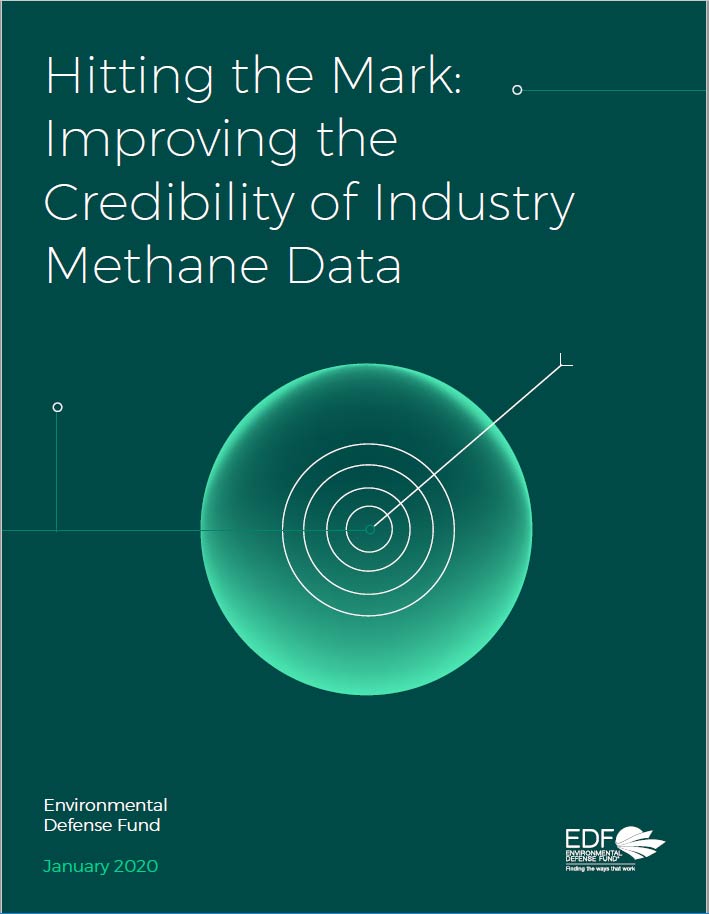- Resources
- Hitting the mark: improving the credibility of industry methane data
Resources
Hitting the mark: improving the credibility of industry methane data
Published: February 1, 2020 by Isabel Mogstad

Methane emissions challenge the global oil and gas industry and the role and reputation of natural gas in a decarbonizing world. Credibly demonstrating near zero methane emissions is both an imperative and a competitive differentiator for companies in the early phases of the energy transition.
However, the oil and gas industry has a methane emissions data problem. The majority of emissions data is derived from desktop calculations, not real-world measurements. Around the world, research reveals that methane emission inventories consistently underestimate, and in some cases overestimate, real emissions. This uncertainty can compromise the integrity and credibility of reported information for governments, civil society and investors.
Improving the accuracy of methane emission estimates is necessary to instill confidence that progress is being made. This report outlines an enhanced approach to measuring and reporting methane emissions.
While the journey begins with increased and improved data acquisition, it does not end there. This paper explores three critical actions that executives must champion to improve data accuracy and earn stakeholder confidence that methane commitments are real.
Key action 1: integrate direct measurement into emissions estimates.
Increase direct measurement of methane emissions to improve data accuracy. This requires conducting bottom-up measurements and integrating these findings with top-down, site-level methane emissions measurements taken from a statistically representative sample of facilities.
Key action 2: increase the transparency and granularity of methane emissions reporting.
Disclosing the methods used for estimating methane emissions is critical to improving the credibility of reported data. Information such as methods applied for measurement and sampling plan design, emissions inventories broken out by region, country and/or basin, and the summary findings from third-party audits all contribute to the fidelity of methane disclosure.
Key action 3: validate reported methane data through a qualified and independent third-party audit.
External auditing by an established, independent firm can add value and improve confidence in methane emissions disclosure. Third-party auditors will need the technical expertise to rigorously assess both the accuracy and integrity of the data as well as the quality of the methods.
Opportunities
Opportunity 1: operationalize shared industry commitment.
To realize the transformation to a digital future, and enabling ecosystem is required. This can be achieved by forging new partnerships and alliances that proactively engage operators, technology companies, civil society and investors around key opportunities to unlock trapped value.
To support and catalyze progress towards long-term methane emissions reduction goals, tactical engagement vehicles — such as regional or asset-specific working groups and data-sharing platforms — could provide industry a platform to share best practices and lessons learned, incubate broader solutioning insights to common pain points, and design tailored partnership frameworks to co-finance and catalyze technology adoption at scale.
Opportunity 2: strengthen technology’s value proposition through innovative commercial models.
In a cost-sensitive environment, new commercial models such as product-as-a-service and performance-based-contracting can support a more compelling positive return on investment. For example, oilfield service companies offering predictive maintenance services can share a portion of the benefits realized from reduced downtime.
Opportunity 3: build a compelling business case for action.
It is observed that 40-50% of the estimated 76 million metric tons of methane leaked from the industry annually can be minimized with the technologies of today at no net cost. Digital methane management solutions may be key to increasing this percentage. To do so, the business case for methane emissions should be the built into broader operational excellence agenda to surface the full triple bottom line value of investments made.
Next steps
To effectively achieve and demonstrate a low methane emissions oil and gas value chain, a comprehensive approach is required. EDF offers a suite of resources to support companies on their journey to methane excellence.
Target setting
Taking Aim: This paper provides five key criteria for oil and gas companies to design environmentally ambitious methane targets.
The Next Frontier: This paper outlines the business case for extending methane commitments and mitigation action to non-operated assets. Today, most methane efforts are constrained to operated assets only, leaving a significant part of company portfolios beyond the scope of methane reduction efforts.
Solutions, technology & innovation
Digital Methane Management: This survey explores the role digital technologies can play in managing methane emissions and captures the perspectives of industry on the challenges, opportunities and the future of digital methane.
Find & Fix: This market research report provides an overview of the emerging methane mitigation and detection service industry that provides methane leak detection and repair (LDAR) services to the oil and gas industry.

